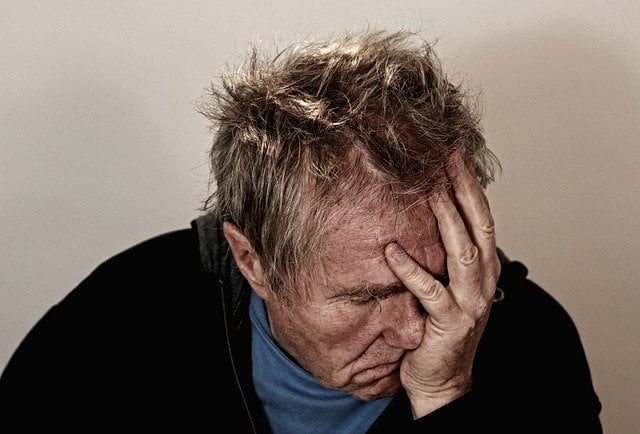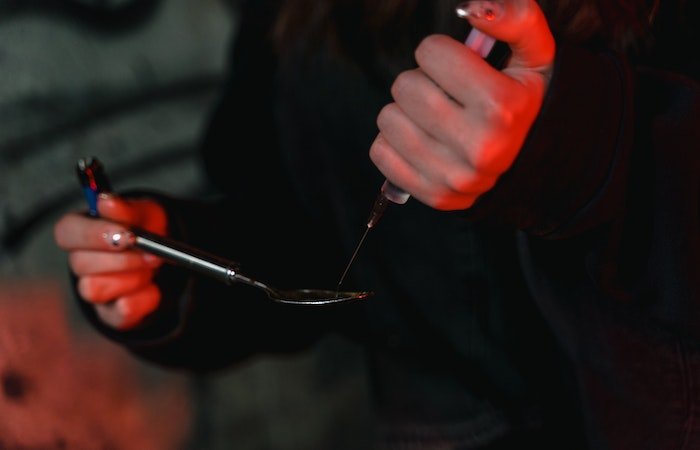Tramadol Withdrawal Symptoms, Timeline & Detox Treatment
Tramadol is a controlled substance which is often used for medical purposes and prescribed as a painkiller.
It’s a form of opioid which is typically used to treat severe to moderate pain. [1]
However, it is important to understand that tramadol is also highly addictive and many people across the UK and the rest of the world suffer from an addiction to tramadol.
While it is important to note that tramadol is less addictive than other opioids and drugs, such as heroin or cocaine, it still has the potential to do some considerable damage and harm to your body. [2]
Despite this, tramadol remains one of the most frequently prescribed opioids and painkillers across the US and approximately 1.7 million people across the US [3] are now believed to be physically and mentally dependent on tramadol.
Tramadol works by attaching itself to the opioid receptors in your train, which works to increase the levels of serotonin in the brain, which then helps individuals manage pain.
Tramadol is great at relieving short-term pain, but is not used to manage chronic or long-term pain.
You can only gain access to tramadol through a prescription, and is usually prescribed in the form of a tablet.
Some doctors might prescribe tramadol and recommend that you consume it alongside paracetamol, although you will need to be very careful when doing so when it comes to your consumption and usage.
If you think that you are addicted to tramadol, then make sure that you speak to your local GP for help and support.
Learn everything you need to know about how tramadol addiction and its recovery process by calling us on 0800 088 66 86
What Are the Side Effects of Tramadol?

Consuming tramadol, even on a short-term basis, can have a whole host of side effects, including some of the side effects listed below for you:
- Fatigue
- Constipation and issues on the toilet
- Dry mouth
- Feeling sick
- Itchy skin
- Seizures
- Loss of appetite
- Joint pain
- Muscle pain
Not only will abusing tramadol lead to some (if not all) of the above side effects, but you are also running the risk of becoming physically dependent on the substance, meaning that you will experience withdrawal symptoms if you don’t consume the substance frequently enough.
Withdrawing from tramadol can be a highly unpleasant experience, which is explained further below.
If you’ve started to spot the side effects of tramadol addiction, get the support you need by calling us today on 0800 088 66 86
How is Tramadol Withdrawal Different From Other Opioids?

Tramadol works differently to other types of opioids as it uses two different types of mechanisms to relieve pain.
First, it works to stimulate the opioid receptors in your brain. It then works to inhibit the amount of serotonin and norepinephrine in the brain.
Serotonin is responsible for managing your mood, your levels of reward, the way that you learn and remember things.
Norepinephrine works as both a hormone and a neurotransmitter and increases your heart rate and the amount of blood that pumps to and from the heart. It also helps to regulate your blood pressure and blood sugar levels.
This means that when an individual withdraws from taking tramadol, they experience two main types of withdrawals. This isn’t common with other types of opioids, such as morphine or methadone.
Individuals who do withdrawal from tramadol will experience stereotypical withdrawal symptoms, some of which are listed below:
- Feeling and being sick
- Diarrhoea
- Muscle pains and aches
- Sweats
- The shakes
- Insomnia
- Nightmares
You will also likely experience other withdrawal symptoms which are more unique to tramadol.
Some of these include:
- Paranoia
- Anxiety
- Panic attacks
- Feeling confused
- Feeling disorientated
- Hallucinations
- Sensory issues
Whilst these withdrawal symptoms are not life-threatening, they can make your withdrawal and your recovery a lot harder.
Unfortunately, people who struggle with these withdrawal symptoms might try to self-medicate or will relapse during their detox, which is why it is important to do so in a controlled environment, such as a rehab facility.
Whatever the nature of your addiction, get help from a drug and alcohol rehab by calling our expert team on 0800 088 66 86
What Will My Tramadol Detox Be Like?

A detox and withdrawal from tramadol can be highly unpleasant, just as detoxing from any highly addictive drug is.
How unpleasant your detox is depends on how addicted you are to tramadol. The severity of your addiction can range from mild and moderate to severe.
If you suffer from a moderate or severe addiction to tramadol, then you will be expected to detox in a rehab facility, where doctors and other healthcare professionals will look after you and your withdrawal symptoms around the clock.
You will start to experience withdrawal symptoms within just a few hours of your detox, depending on the severity of your addiction to tramadol.
Usually, your withdrawal symptoms will last around 5 to 7 days, although this will only ever be the case if your doctor uses medication to manage your withdrawal symptoms.
During your detox, you will most likely be prescribed other forms of medication which will work to manage your withdrawal symptoms.
This is very common and your doctor should have had previous experience in tramadol withdrawal management.
If you are still experiencing withdrawal symptoms one week after withdrawing from tramadol, then you might be experiencing post-acute withdrawal syndrome, which is commonly referred to as PAWS.
Post-acute withdrawal syndrome can last a number of weeks or even sometimes months after withdrawing from a substance, and usually consists of depression, anxiety, a lack of appetite, insomnia and feeling irritated.
Over time these symptoms will decrease, although they do make your withdrawal harder and your chances of releasing during this time much higher.
If your withdrawal symptoms are getting out of hand, then your doctor will likely prescribe you metoclopramide if you’re being physically sick.
Likewise, your doctor might prescribe you clonidine [4] or Librium if you’re feeling especially anxious or paranoid.
If you are currently withdrawing from tramadol, whether that’s at home or in a rehab facility, then make sure that you are able to manage your withdrawal symptoms and seek help if you need to do so.
Make sure that your tramadol detox is safe and effective by giving our team a call on 0800 088 66 86
Tramadol Withdrawal Timeline

Tramadol withdrawal can be unpleasant, but it is important to remember that if managed correctly, your withdrawal from tramadol should only last a few days and no more than a week.
The timeline of any withdrawal can, at times, be unpredictable.
This is because it usually depends on the severity of your addiction, including how long you have been addicted to tramadol for, and whether or not you are addicted to other drugs or substances alongside tramadol.
So, the general withdrawal timeline for tramadol differs, but there are typical symptoms that tend to occur within a certain timeline after first initially withdrawing from tramadol.
These symptoms and the time at which they typically occur are listed below.
1. Within the first day
Within the first 24 hours of withdrawing and detoxing from tramadol, you will start to experience some sort of withdrawal symptoms, although these will usually only be mild to begin with.
How severe your symptoms are and how quickly they will begin depends on a number of different factors, including how severely you are addicted to a substance, your genetics, how much you typically consume of the substance and how frequently you consume it.
2. Within the first two to three days
Within the first 48 hours after initially withdrawing from tramadol, you will start to experience some of the more traditional and typical withdrawal symptoms that are usually experienced when an individual detoxes and withdraws from any type of opioid.
This will usually include things such as anxiety, the sweats, muscle aches and pains. You might also start to experience insomnia and the shakes.
You might also find that you develop what seems to be a cold and other flu-like symptoms during this time, such as a runny nose or sneezing frequently.
3. Between days 4 – 7
Between days 4 – 7, your withdrawal symptoms will worsen and become more severe. You will still be experiencing symptoms that are associated with any other opioid withdrawal, although they will start to feel unbearable by the time you get to this stage.
You might start to experience diarrhoea, severe stomach cramps and more vomiting. You might be prescribed medication during this stage of your withdrawal, in case your symptoms worsen or are becoming too difficult to cope with.
4. Between days 8 – 14
Between days 8 – 14, your withdrawal symptoms might end if you are suffering from only a mild addiction to tramadol. If your addiction is severe, then you are likely to still be suffering from severe withdrawal symptoms.
Your withdrawal symptoms will only continue in intensity from this stage onwards and will only do so if your addiction is classified as severe.
5. Two weeks or more
Two weeks in and your withdrawal symptoms should have eased not disappeared altogether.
Although, this does heavily depend on how severe your addiction was in the first place.
If you are still experiencing withdrawal symptoms at this stage, then you will be diagnosed with PAWS which could last a number of months if they are not managed correctly.
Post-acute withdrawal symptoms can be long-lasting and unpleasant. During this time, it will be incredibly easy to relapse.
This is why it is incredibly important to have a supportive aftercare plan in place for when you overcome your rehab treatment and return back home.
To learn everything you need to know about tramadol withdrawal and the recovery timeline, call us on 0800 088 66 86
Which Factors Affect How Long Tramadol Withdrawal Symptoms Last?

There are a number of factors that influence and affect how long your withdrawal symptoms last when it comes to detoxing from tramadol and other types of drugs and opioids.
This will usually depend on your genetic make-up and the way that your body processes drugs and other substances.
Your age and your gender will also come into play, as well as your physical health and how physically active you are.
If you have a family history of mental health issues or substance use disorders, then you are more likely to take longer to detox and withdraw from drugs and other substances.
Likewise, if you have previously suffered from mental health issues such as anxiety or depression, then it is highly likely that these symptoms will be worsened if you attempt to detox or withdraw without support.
In addition to this, if you consume other drugs or substances alongside tramadol, then you are much more likely to suffer from more severe and long-lasting withdrawal symptoms.
Learn more about the various factors that impact tramadol withdrawal by giving us a call on 0800 088 66 86
What Does Tramadol Addiction Treatment Involve?

When you attend drug and alcohol rehab, your rehab treatment plan should be personalised to you and your specific addiction and circumstances.
There is not one treatment plan that serves all.
Just as each individual is different, so are their addiction issues and the circumstances that have led them to where they are today.
Your rehab treatment will depend on what type of substance you are addicted to, how long you have been addicted to that substance for and whether you suffer from any trauma which may have led you to become addicted to a drug or substance in the first place.
When devising a treatment plan, your doctors will look at your specific circumstances and addiction issues and create a personalised treatment and aftercare plan that will help you to successfully recover.
Below is a list of different and commonly used treatment techniques used throughout most rehab centres across the UK and beyond.
1. Talking therapies
Talking therapy is one of the most commonly used therapy techniques in rehab centres. Talking therapy will include different therapy techniques, including cognitive behavioural therapy and motivational interviewing.
During talking therapy, you will be encouraged to talk and think about any triggers which might have led you to become addicted to certain drugs or substances in the first place.
This could include things such as childhood trauma, dysfunctional relationships, stress in the workplace or some form of adult trauma such as domestic abuse or sexual assault.
During talking therapy, it is important to remain as open and honest with your therapist as possible, so that you can get the most out of your time in therapy.
Your therapist might also want you to discuss any mental health issues that you might be suffering from, including anxiety, paranoia or depression.
2. Detoxification and withdrawal
In addition to talking therapy, you will also need to undergo a detox and withdrawal if the drug or substance that you are addicted to is physically addictive and your body is dependent on the substance in order to function.
As discussed above, your withdrawal can last anything between a few days and a few weeks, depending on how severe your addiction to tramadol is in the first place.
During this withdrawal and detox, you will experience a whole host of withdrawal symptoms.
Once this detox and withdrawal is complete, you will now be in a better place to tackle the mental and psychological side of your addiction, including any triggers or traumas that might have led you to become addicted in the first place.
3. Medication
During your treatment for tramadol addiction, you might also be prescribed certain medications. This might include medication such as methadone, Librium and buprenorphine.
These medications will help you to overcome your withdrawal from the addictive substances without being overcome by unpleasant withdrawal symptoms.
Make sure that you get the right treatment for tramadol addiction by calling us on 0800 088 66 86
Warnings About Detoxing from Tramadol

As tramadol is an addictive drug, it is important to remember that there are risks involved in detoxing and withdrawing from the substance.
These risks differ in severity, but are equally important as each other:
1. Increased risk of developing a seizure
Unfortunately, detoxing and withdrawing from tramadol increases your risk of developing a seizure during and after your withdrawal. This is because taking tramadol is associated with seizures and could result in a traumatic and long-term brain injury.
When you abuse tramadol on a regular basis, you are said to lower your seizure threshold, making it much more likely that you will experience a seizure whilst consuming the drug or withdrawing from the drug.
2. Increased risk for older adults
Unfortunately, the older you are, the higher risk any withdrawal is, regardless of the drug or type of substance. If you are aged over 65 years old, then you are more likely to experience risks associated with your withdrawal from tramadol, compared to those at a younger age.
3. Increased risk of serotonin syndrome
If you are withdrawing from tramadol, then you are much more likely to develop a condition called serotonin syndrome. This is only likely to happen if you relapse after withdrawing from a drug like tramadol.
This syndrome occurs when a substance affects the levels of serotonin in your body.
This typically happens when an individual consumes substances such as opioids or antidepressants, or withdraws from taking them suddenly before continuing to take them again after a relapse. [5]
There are a number of signs and symptoms associated with serotonin syndrome, [6] including dilated pupils, excessive sweating, shakes, an increased heart rate, muscle aches and muscle twitches.
Ensure that your detox is safe and effective by calling our expert team on 0800 088 66 86
Should I Detox at Home or at Inpatient Drug and Alcohol Rehab?

If you need to detox and withdraw from tramadol or another addictive substance, then you might wonder whether you are better off withdrawing at home or at an inpatient drug and alcohol rehab treatment centre.
It is important to understand that if you suffer from a severe addiction, then you will need to detox within the safety of a rehab facility, as it is more likely that your symptoms will be severe.
This means that your withdrawal symptoms will need to be managed around the clock by a team of professionals.
If the severity of your addiction is classified as mild, then you might be permitted to detox in the comfort of your home.
A home detox will allow you to recover at home with your family by your side. You will receive daily phone calls from doctors and nurses to check up on you and your symptoms.
If they think that you need any medication, then this will be sent in the post to your home.
For help choosing between inpatient or outpatient treatment for tramadol addiction, call us on 0800 088 66 86
What Do I Do After a Tramadol Detox Ends?

If you have completed a tramadol detox the first time around – with no relapses – then you should be very proud of yourself. Detoxing from any drug or substance is often the hardest part of the process.
Whilst successfully detoxing from tramadol is a major achievement, the idea of no longer being dependent on a substance can be incredibly overwhelming for some people.
This is why it is incredibly important to have an aftercare and support plan ready and waiting for you when you leave drug and alcohol rehab and re-enter day to day life.
After detox, you will receive a wide range of therapy treatment, either via inpatient or outpatient rehab treatment. This therapy will include things such as cognitive behavioural therapy and motivational interviewing.
This will tackle the psychological side of your addiction, as well as any trauma or mental health issues that you might be suffering from.
Once you have been discharged from drug and alcohol rehab, you will continue your treatment in the form of aftercare.
This aftercare will usually consist of outpatient treatment, therapy sessions and attending support groups such as Narcotics Anonymous and SMART meetings.
Be certain that your treatment is matched by an equally effective aftercare plan by calling us on 0800 088 66 86
Talk to Rehab Recovery

If you are struggling with an addiction to tramadol or any other type of drug or substance, then it is important to remember that it is never too late to seek help and support.
Our team at Rehab Recovery are on hand to help and support anyone who is suffering from a drug and alcohol addiction, including those suffering from an addiction to tramadol.
You can start your recovery journey today by contacting our team on 0800 088 66 86
References
[1] https://www.deadiversion.usdoj.gov/drug_chem_info/tramadol.pdf
[2] https://www.ncbi.nlm.nih.gov/pmc/articles/PMC6514531/
[4] https://nida.nih.gov/publications/drugfacts/prescription-opioids
[5] https://www.accessdata.fda.gov/drugsatfda_docs/label/2010/022370s000lbl.pdf




